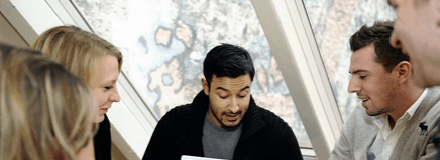Organization and Team Dynamics
Code UE : US1733
- Cours + travaux pratiques
- 4 crédits
Responsable(s)
Alexis POKROVSKY
Timéa CSASZAR
Public, conditions d’accès et prérequis
Master in Management MIM M2 group: Project Management & Business Engineering
Objectifs pédagogiques
Teamwork gets tasks done. However, what is a team? How does it function? What are the dynamics of a team? What does it take to be an effective team leader? This course teaches the characteristics of a well-functioning team and techniques for effective group decision-making. It looks at how to develop and adapt your own leadership style, how to set effective team goals, and how to implement strategies to secure the commitment of team members.
- Understand what is at stake in a group to optimise its efficiently
- Acquire the key concepts, and use them in creating and developing organisation
- Provide the skills for collective work in other disciplines
- Develop self-awareness through experiencing.
- Open to the mastery business team efficiency
- Develop analytical and critical understanding of work organisations
- Get ready for ethical leadership and transformational roles in business.
- Develop personal and interpersonal toolbox for group-working success.
Compétences visées
- Principles of group dynamics and development
- Dimensions of team member behavior
- Assessment of how effectively a team functions
Mots-clés
Contenu
Introduction to the objectives of the course
~ What it is, what it brings
~ Different approaches
Group communication and personalities
~ Processes of communication
~ Synergy or divergence
~ Global dynamic
The life of the group
~ Formation, cohesion, development
~ Interactions, affects, emotions
~ Conformity and mimetic processes
The structure of the group
~ Roles and dynamics
~ Power and influence
~ Conflicts within a group
The action of the group
~ Ambition, reasons of being and values
~ Setting up an action plan
~ Decision making and mistakes of decision making
Organisations and larger groups
~ A short outlook on the key organisation theories
~ What to apply in business / practical output
Organisations and complexity
~ What is complexity and why it is growing
~ How to handle complexity in work organisation
~ What it is, what it brings
~ Different approaches
Group communication and personalities
~ Processes of communication
~ Synergy or divergence
~ Global dynamic
The life of the group
~ Formation, cohesion, development
~ Interactions, affects, emotions
~ Conformity and mimetic processes
The structure of the group
~ Roles and dynamics
~ Power and influence
~ Conflicts within a group
The action of the group
~ Ambition, reasons of being and values
~ Setting up an action plan
~ Decision making and mistakes of decision making
Organisations and larger groups
~ A short outlook on the key organisation theories
~ What to apply in business / practical output
Organisations and complexity
~ What is complexity and why it is growing
~ How to handle complexity in work organisation
Modalité d'évaluation
Acquisition of methodological tools (in-class follow-up)
In-class participation
Professor’s discretion
Final examination
In-class participation
Professor’s discretion
Final examination
Cette UE apparaît dans les diplômes et certificats suivants
Rechercher une formation
CRITERES
- Le champ Mot-clé permet de rechercher les formations grâce à un mot ou à une expression présent dans l’intitulé ou dans les index d’une formation.
Des index vous sont suggérés à partir du 3e caractère saisi, mais vous pouvez aussi saisir librement tout autre chaîne de caractères . - les différents items sélectionnés sont croisés.
ex: "Comptabilité" et "Région Alsace"
CODE
- Vous pouvez utiliser le caractère joker * pour remplacer un nombre quelconque de caractères
- UE : le code comprend 3 lettres immédiatement suivies de 3 chiffres
- Certificat : le code comprend 2 ou 3 lettres immédiatement suivies de 3 chiffres. Certains certificats se déclinent selon plusieurs parcours :
- pour afficher le tronc commun, tapez le code simple (ex : LG005).
- pour afficher un parcours précis dans un diplôme, faites suivre le code de la lettre "p", et du numéro de parcours (ex : LG005p2). Si le diplôme ne comporte qu'un seul parcours, faites suivre la lettre "p" de -1 (ex : CYC17p-1).
Dans tous les cas, veillez à ne pas insérer d'espace ou de ponctuation supplémentaire.
Chargement du résultat...

Intitulé de la formation |
Type |
Modalité(s) |
Lieu(x) |
|
|---|---|---|---|---|
|
Lieu(x)
Initial
|
Lieu(x)
Paris
|
|||
|
Lieu(x)
Alternance
|
Lieu(x)
La Plaine Saint-Denis
|
|||
Intitulé de la formation
Diplôme d'établissement Master of Science in Management Parcours Project Management
|
Lieu(x)
Package
|
Lieu(x)
Paris
|
||
| Intitulé de la formation | Type | Modalité(s) | Lieu(x) |
Contact
Voir le calendrier, le tarif, les conditions d'accessibilité et les modalités d'inscription dans le(s) centre(s) d'enseignement qui propose(nt) cette formation.
Enseignement non encore programmé
Code UE : US1733
- Cours + travaux pratiques
- 4 crédits
Responsable(s)
Alexis POKROVSKY
Timéa CSASZAR








